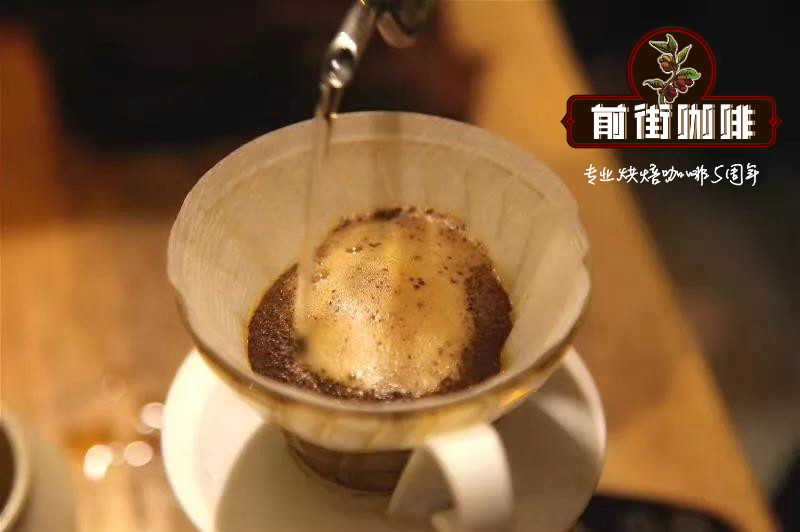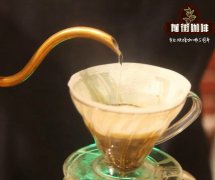Brief introduction of Yemeni Coffee producing area how to brew Yemeni Coffee Madali Mocha

Professional coffee knowledge exchange more coffee bean information please follow the coffee workshop (Wechat official account cafe_style)
Yemeni Coffee Madali Mocha (Yemen Matari Mocha)
"Mocha,Moka,Moca,Mocca" is so famous that instant coffee used to be named after it. Starbucks' best-selling drinks also have many items that contain the word mocha. But what exactly is mocha? Why do people love to use it so much?
It turns out that mocha is a former port in Yemen, where most of the coffee is exported, so mocha is actually synonymous with Yemeni coffee in the past. Yemen is located in the southern tip of the Arabian Peninsula, the natural environment is very different from other coffee-producing countries, not only lack of water, dry, land is also poor. There are not many places in the Arabian Peninsula where coffee beans can be grown, or it can be said that mocha is synonymous with Arabian coffee.
Nowadays, the sun-tanned coffee beans in the Hara region of Ethiopia are also exported in the name of mocha. Why? Because it tastes like it. Friends who are familiar with the producing areas may know that Yemenmoka is relatively thick, which is quite different. Mocha coffee is characterized by its rich chocolate aroma, which was rare at that time. The combination of coffee and chocolate can be said to be a match made in heaven, which may be why Mocha is so famous.
Yemeni coffee production is still low, mostly wild, and the treatment is also a traditional sunburn (as you know, because of the lack of water). In this context, the quality of coffee beans must be unstable, and it is challenging to master the taste of this bean. Some friends advised me not to waste time on this bean, because the bean looks so bad, it takes a lot of time to pick the beans, and the fried taste is not necessarily pleasant. However, just "Yemen" and "mocha" are too easy to make people reverie, how can they not try?
Flavor description:
The palate is full-bodied, woody, wine, juicy,
Flavors such as berries, dried fruits, dried longan, as well as tobacco and smoky aftertaste
As long as Yemeni coffee is immediately reminiscent of thick and wild sun beans, coffee farmers in Yemeni have been planting according to the ancient methods handed down by their ancestors, because Yemeni coffee farmers are not easy to grow and have little rainfall. Therefore, Yemeni coffee farmers choose terraces or lowlands for planting, and choose areas that are not easily exposed to strong sun exposure, while most Yemeni farmers are poor and cannot use pesticides. Almost all of them are cultivated naturally and organically.
Madali is the most famous coffee bean in Yemen. It is located in the Bani Matari to the west of the capital Sana'a. It has a strong, thick flavor with obvious berry aromas.
Important Notice :
前街咖啡 FrontStreet Coffee has moved to new addredd:
FrontStreet Coffee Address: 315,Donghua East Road,GuangZhou
Tel:020 38364473
- Prev

The main characteristics of Yunnan Coffee Flavor the number of manors in the domestic producing areas of Yunnan coffee
Professional coffee knowledge exchange more coffee bean information Please follow the coffee workshop (Wechat official account cafe_style) in recent years, with the increasing demand for coffee at home and abroad, China's coffee industry has also made a new improvement. Perhaps in the eyes of most Chinese, Yunnan has always been the rural land of China or the capital of tea. It also has one of the few in the land of China
- Next

Comparison of flavor characteristics of Kenyan Sika coffee beans by manor processing plant in Kenya Sika producing area
Professional coffee knowledge exchange more coffee bean information please follow the coffee workshop (Wechat official account cafe_style) Kenya Sikamu Gaga Cooperative Honey processing Plant AA TOP (Kenya Thika Asali Mugaga Cooperative) treatment: washing baking degree: shallow baking flavor description: the entrance can feel quite heavy mellow feeling, the whole with bright
Related
- Does Rose Summer choose Blue, Green or Red? Detailed explanation of Rose Summer Coffee plots and Classification in Panamanian Jade Manor
- What is the difference between the origin, producing area, processing plant, cooperative and manor of coffee beans?
- How fine does the espresso powder fit? how to grind the espresso?
- Sca coffee roasting degree color card coffee roasting degree 8 roasting color values what do you mean?
- The practice of lattes: how to make lattes at home
- Introduction to Indonesian Fine Coffee beans-- Java Coffee producing area of Indonesian Arabica Coffee
- How much will the flavor of light and medium roasted rose summer be expressed? What baking level is rose summer suitable for?
- Introduction to the characteristics of washing, sun-drying or wet-planing coffee commonly used in Mantenin, Indonesia
- Price characteristics of Arabica Coffee Bean Starbucks introduction to Manning Coffee Bean Taste producing area Variety Manor
- What is the authentic Yega flavor? What are the flavor characteristics of the really excellent Yejasuffi coffee beans?

